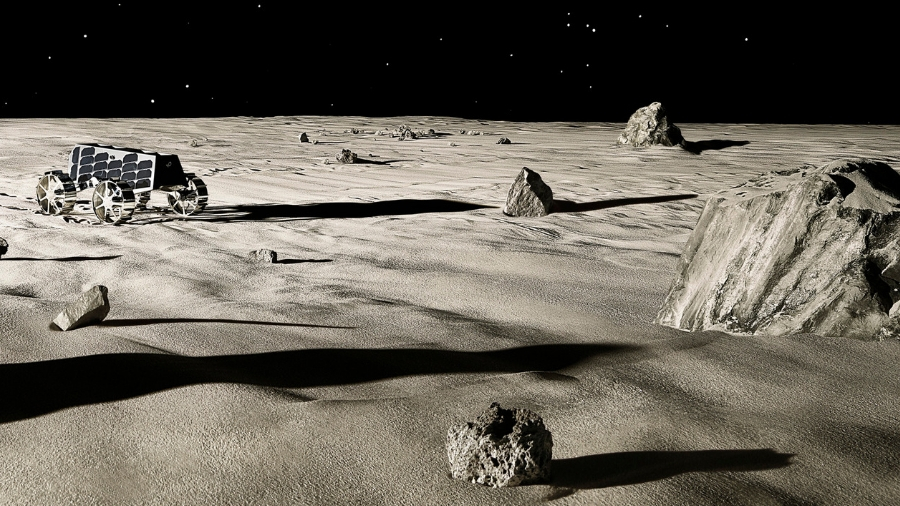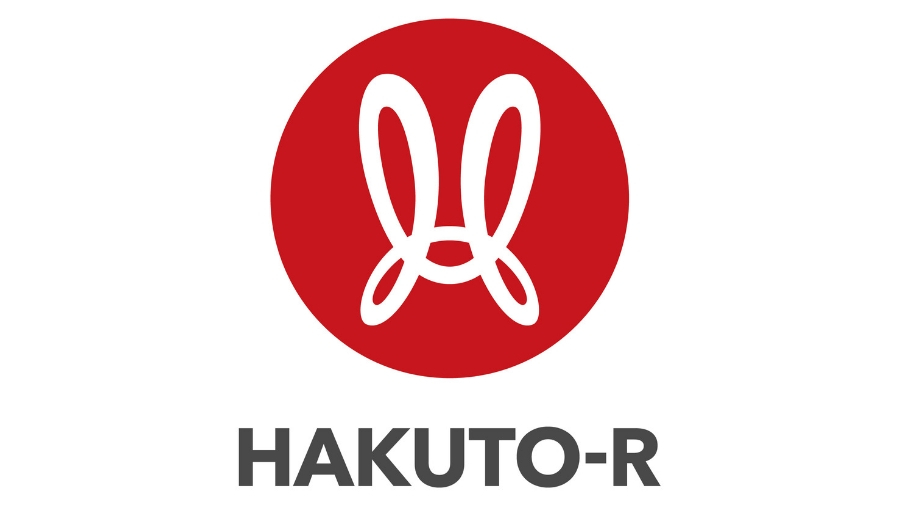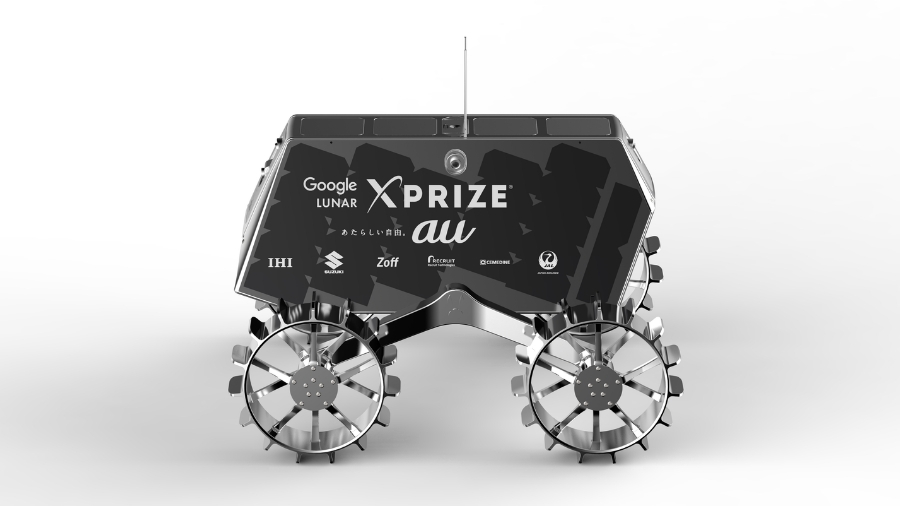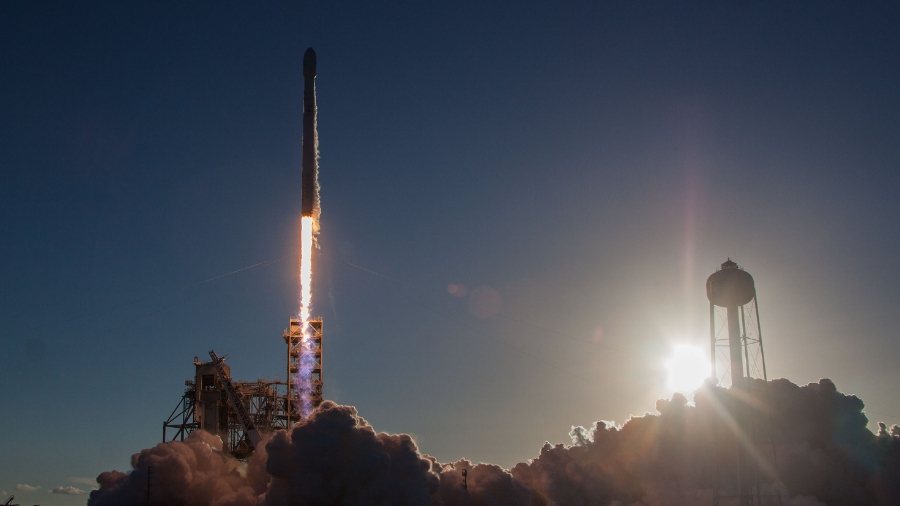A Japanese startup is set to go hunting for ice… on the Moon
The Japan Airlines-backed venture is planning an Earth-Moon transport system starting next year

Last night, Israel's first mission to the moon launched successfully on a SpaceX rocket. Israel now looks set to become the fourth nation to briefly put a lander on the moon, but a private company in Japan has much more ambitious plans.
Called HAKUTO-R, a two-pronged mission from Tokyo-based ispace intends to conduct tech tests on the lunar surface and eventually locate, extract and deliver lunar ice to space agencies and private space companies.
Can Japan become another ‘lunar nation’ by its target of mid-2020? Japan Airlines (JAL) thinks so. A major backer of the project, it's one of three companies that today released details of how they're going to help ispace get to the Moon – and what they're going to do when they get there.

What is ispace?
ispace describes itself as a private lunar exploration company. With an HQ in Tokyo and offices in Luxembourg and the US, it has 85 staff. Headed up by entrepreneur Takeshi Hakamada, it's got a similar pedigree to the SpaceIL team that just launched its Beresheet spacecraft to the Moon.
Like SpaceIL, ispace was also one of the five finalists in the Google Lunar XPRIZE competition to encourage the building, launch and landing of an unmanned spacecraft on the Moon by a private company before March 31, 2018. The XPRIZE – reward $20,000 (abour £15,000, AU$28,000) – proved just a little too ambitious, but some of the companies it helped create are now on the cusp of going to the Moon.
ispace was so successful is raising funds from investors during that process, including from JAL, that is going ahead despite the lack of a financial prize. It’s using a chunk of its US$95 million fund to purchase two SpaceX flights. Since Israel just sent Beresheet to the Moon for US$90 million, ispace should be taken seriously.

What's the plan?
When it comes to space exploration, you need a vision. This one is about the new lunar frontier and the expansion of human activity in space. "We're trying to establish a structure for a transportation system," says Aaron Sorensen, global communications specialist at ispace's HQ in Tokyo, talking to TechRadar at January's CES in Las Vegas. "So our lander will provide transportation for space agencies or companies or individuals that want to send things to the moon, such as research equipment, supplies, and tools."
Get daily insight, inspiration and deals in your inbox
Sign up for breaking news, reviews, opinion, top tech deals, and more.
However, another critical part of the mission is surface exploration. "We want to identify where water ice exists and map that out so that we can eventually learn how to use it as a resource," said Sorensen. Technically speaking this is about developing a way of separating the Moon's water ice into hydrogen and oxygen to create basic rocket fuel for spacecraft orbiting the Moon. That could enable a self-sufficient moonbase, or lunar operations, but could also make the Moon a useful staging post for missions to Mars.
"To get out of Earth's atmosphere the gravitational pull is very heavy, so if you could just use enough hydrogen fuel to get to the moon you could then use it as a refueling station to go to Mars and into deeper space," said Sorensen.
However, ispace’s vision goes deeper even than that. "We want to be able to provide a vehicle for private companies so that they can see the moon as an extension of their business, and basically incorporate the moon into the Earth's economic system," said Sorensen.
The first missions will land somewhere on the near-side of the Moon.

What is HAKUTO-R?
HAKUTO-R is the world’s first private lunar exploration program consisting of multiple missions. So far, it's two missions: a Moon orbit in mid-2020 followed by a Moon landing in mid-2021 involving a lunar rover. Both will be launched as secondary payloads on a SpaceX Falcon 9 rocket, just as SpaceIL's Beresheet was yesterday. They are tech demonstrations, for sure, but they could pave the way for a regular 'Moon shuttle' system that would give private companies predictable and affordable access to the lunar surface. That's the big idea.
Once the tech is proven by the first two missions, ispace is planning to send seven more missions to kick off an Earth-Moon transport system, and will also include a lander to look for water at the Moon's poles.

What companies are supporting it?
This morning JAL announced that it's become a full corporate partner. Already one of ispace's major financial backers, JAL will provide a facility near Narita International Airport in Tokyo for the assembly, integration and testing of HAKUTO-R’s lunar landers, as well as technical support. It will also fly the spacecraft to the US launch site. “Japan Airlines has been one of our most dedicated supporters over the years,” said Hakamada. “We are grateful they continue to push us toward our dream.”
Another Japanese company has already set its sights on live technology tests on the lunar surface. Nagoya-based NGK Spark Plug announced today that it will test its solid-state battery technology on the Moon on the 2021 mission. Since its way too cold on the Moon to use lithium-ion batteries, which use liquid electrolytes, stable energy storage will be a key technology if any moon-base is ever built. Or if mining operations commence.
Arguably just as critical in actually encouraging private moon missions is Mitsui Sumitomo Insurance's announcement of a lunar insurance service. “The availability of lunar exploration insurance will encourage new players to participate in the lunar industry by reducing the risk of entry,” said Hakamada.
Another investor in ispace is KDDI, a Japanese telecommunications operator interested in providing communications between the Earth and the Moon.

Why do we need new private companies in space?
Once dominated by national, government-funded space agencies, the private space industry is mushrooming. The US has plenty of private space companies, among them SpaceX and Orbital ATK, which take supplies to the International Space Station. SpaceX and Boeing could soon take astronauts there. Other notables include Astrobotic and the very ispace-like Moon Express.
Not surprisingly, NASA, the European Space Agency (ESA) and the Japanese Space Agency (JAXA) want to examine the Moon in more detail to see if it can be used as a staging post to Mars. Cue a race to provide those space agencies with a lunar landing system. Nine US companies are currently are developing landers to deliver NASA payloads to the Moon’s surface, while SpaceIL's cut-price Beresheet is an effort to impress ESA. ispace's HAKUTO-R could be JAXA's way of getting to the Moon.
However, there's something a little more ambitious about HAKUTO-R in that it's not just trying to get government contracts, but wants to kick-start a new commercial space industry.
With SpaceX already launching private satellites, last night launching a private mission to the Moon, and now also lined-up to launch HAKUTO-R, the pieces of the jigsaw are falling into place for a self-sustaining private space industry.
Jamie is a freelance tech, travel and space journalist based in the UK. He’s been writing regularly for Techradar since it was launched in 2008 and also writes regularly for Forbes, The Telegraph, the South China Morning Post, Sky & Telescope and the Sky At Night magazine as well as other Future titles T3, Digital Camera World, All About Space and Space.com. He also edits two of his own websites, TravGear.com and WhenIsTheNextEclipse.com that reflect his obsession with travel gear and solar eclipse travel. He is the author of A Stargazing Program For Beginners (Springer, 2015),
